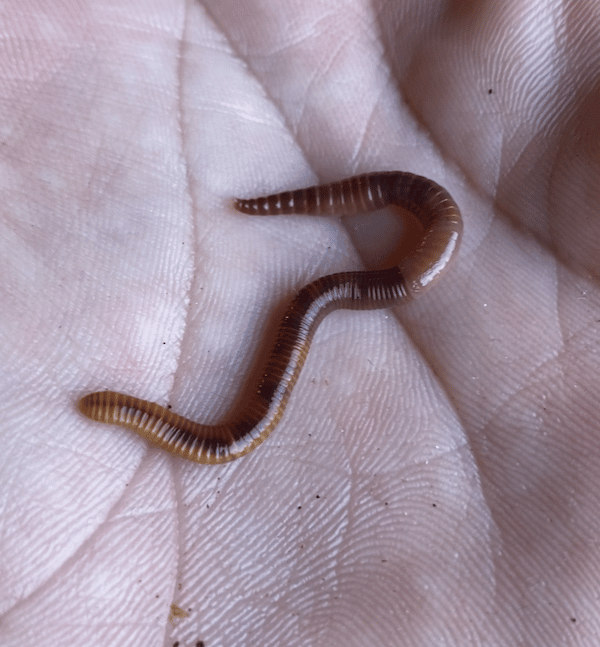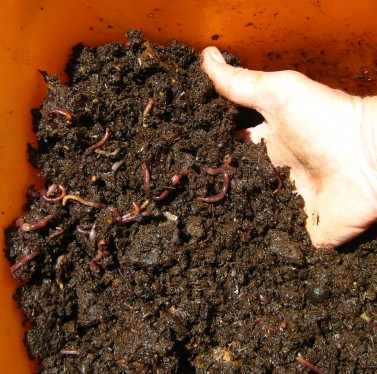Change Your Waste with Red Wiggler Composting: A Total Beginner's Overview
Change Your Waste with Red Wiggler Composting: A Total Beginner's Overview
Blog Article
Utilizing the Power of Red Wiggler Composting: An Extensive Consider the Environmental and Agricultural Perks of This All-natural Waste Decrease Technique
The method of red wiggler composting stands for a compelling junction of environmental stewardship and farming development, offering a sustainable option to the growing difficulties of waste monitoring and soil deterioration. Via the all-natural procedure of vermicomposting, natural waste is changed into an important resource that not just enhances soil however also adds to a substantial reduction in land fill payments and greenhouse gas emissions. As we check out the multifaceted benefits of this technique, we discover how it can improve farming methods and promote environmental understanding, prompting a better evaluation of its prospective influence on our ecological communities and areas.
What Are Red Wiggler Worms?
Red wiggler worms, medically recognized as Eisenia fetida, are a varieties of earthworm specifically adjusted for composting and natural waste malfunction. These worms prosper in the nutrient-rich environment of breaking down organic issue, making them perfect for vermicomposting systems. Expanding to a size of around three to four inches, red wigglers are identified by their reddish-brown pigmentation and distinctive banding patterns along their bodies.
Unlike various other earthworm varieties, red wigglers like to inhabit the top layers of dirt and organic debris, where oxygen levels are greater and food resources are bountiful. Their physiological adaptations enable them to refine natural materials successfully; they have a strong digestion system that allows them to transform waste right into nutrient-rich castings, typically referred to as "black gold" in horticulture and agricultural contexts.
Eisenia fetida plays a vital function in the ecological community by assisting in the decay process, enhancing soil framework, and advertising microbial task. Offered their one-of-a-kind qualities and ecological value, red wiggler worms have actually ended up being a central component in sustainable waste management techniques and natural gardening initiatives, adding considerably to environmental health and wellness.
Advantages for Soil Wellness
The inclusion of red wiggler worms in composting systems supplies considerable benefits for soil wellness. These worms play a crucial role in the decomposition process, breaking down raw material right into nutrient-rich vermicompost. This all-natural plant food enhances soil oygenation, water, and framework retention, contributing to an extra favorable setting for plant growth.
Vermicompost is abundant in essential nutrients such as potassium, nitrogen, and phosphorus, which are important for plant advancement (Red Wiggler Composting). The presence of helpful bacteria in vermicompost better advertises dirt health by boosting vitamins and mineral accessibility and suppressing soil-borne pathogens. This vibrant interaction fosters a durable dirt ecological community that sustains sustainable farming practices
Additionally, red wigglers help with the development of humus, a steady organic matter that enhances soil fertility and resilience. This boosted natural content not only enhances dirt texture yet likewise boosts its ability to sequester carbon, minimizing climate adjustment influences.
Including red wiggler composting right into agricultural systems can, consequently, cause healthier soils, greater crop returns, and boosted sustainability. As an outcome, embracing this all-natural waste reduction approach can yield profound benefits for both the setting and agricultural productivity.
Influence On Waste Reduction
Integrating red wiggler worms into composting systems substantially decreases waste, changing natural products that would otherwise add to garbage dumps right into useful garden compost. This technique, referred to as vermicomposting, effectively refines cooking area scraps, backyard waste, and other eco-friendly materials, causing a substantial reduction in the quantity of waste sent to garbage dumps. According to the Environmental Protection Company, natural waste comprises a considerable section of landfill components, creating damaging greenhouse gases as it decays anaerobically.
By utilizing red wigglers, an extremely effective composting representative, organizations and households can divert a significant quantity of natural waste from these landfills. Each pound of red wigglers can refine and eat about half a pound of organic waste daily, causing an impressive decrease in overall waste generation.
Moreover, the application of vermicomposting supports regional waste administration efforts and promotes a round economic situation, in which waste is changed right into a source. As areas increasingly adopt this method, the advancing impact on waste reduction ends up being apparent, promoting a much more sustainable environment and encouraging responsible waste management practices. Embracing red wiggler composting not just mitigates waste concerns but likewise improves area recognition concerning lasting living.
Enhancing Agricultural Practices
Utilizing red wiggler worms in agricultural practices can dramatically enhance soil health and crop click here now productivity. These worms play a crucial function in the composting process, damaging down natural matter into nutrient-rich vermicompost. This all-natural fertilizer improves dirt framework, water, and aeration retention, which are important for robust plant growth.
Furthermore, the spreadings generated by red wigglers are abundant in necessary nutrients, such as phosphorus, potassium, and nitrogen, promoting healthier plants with greater yields. The microbial activity boosted by these worms additionally adds to a flourishing soil ecosystem, raising biodiversity and strength against illness and insects.

Additionally, making use of vermicompost can improve dirt pH levels, making nutrients extra available to plants. blog here Red Wiggler Composting. Therefore, farmers can cultivate much healthier crops while simultaneously adding to soil conservation initiatives, inevitably developing a more sustainable agricultural future
Starting With Composting
Starting your composting journey calls for an understanding of the vital parts and processes entailed. The primary component in red wiggler composting is natural waste, which can include kitchen area scraps, yard waste, and paper products. It is critical to maintain an equilibrium in between green products, abundant in nitrogen, and brown materials, high in carbon. This equilibrium cultivates an optimal atmosphere for red wigglers, which are the vital organisms in this composting technique.
Choosing an ideal composting system is similarly vital. Worm containers can be designed for indoor or outside usage, and they should provide sufficient drain and oygenation. It is suggested to begin with a handful of worms-- around one pound of red wigglers for every one extra pound of waste generated once a week.

Final Thought

The technique of red wiggler composting stands for an engaging crossway of environmental stewardship and agricultural innovation, supplying a lasting option to the expanding obstacles of waste management and soil deterioration.Additionally, the application of vermicomposting assistances neighborhood waste management efforts and advertises a circular economy, wherein waste is transformed into a resource. As neighborhoods progressively embrace this method, the collective result on waste decrease comes to be noticeable, cultivating an extra lasting setting and motivating accountable waste administration methods. The main component in red wiggler composting is organic waste, which can include kitchen scraps, yard waste, and paper items.In recap, red wiggler composting offers a lasting option for organic waste management, yielding nutrient-rich vermicompost that significantly enhances dirt health.
Report this page